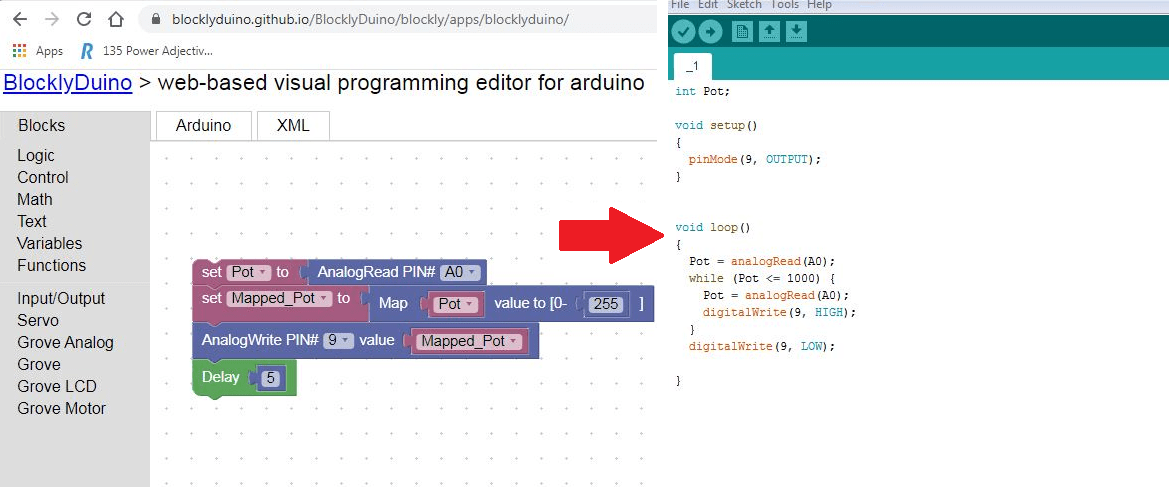

\appdata\roaming\arduino15\packages\esp8266\tools\xtensa-lx106-elf-gcc\1.20.0-26-gb404fb9\xtensa-lx106-elf\include\c++\4.8.2/tuple:1088: undefined reference to `std::_Rb_tree_insert_and_rebalance(bool, std::_Rb_tree_node_base*, std::_Rb_tree_node_base*, std::_Rb_tree_node_base&)'Ĭollect2.Let’s check out the analogRead() command to get a feel for it. Floating World Backlit Moss Map With Arduino Fiber Optic LED Cities: I have this huge 11ft-wide empty wall in my apartment and for the longest time I. : In function `std::_Rb_tree, std::_Select1st >, std::less, std::allocator >::_M_get_insert_hint_unique_pos(std::_Rb_tree_const_iterator >, String const&)': \AppData\Local\Temp\build7864248188764169690.tmp/pfile.cpp:37: undefined reference to `std::_Rb_tree_increment(std::_Rb_tree_node_base*)' Syntax of the map function in Arduino Application of the map function using Arduino UNO Overview In this DIY project, we’ll develop a process to translate changes in resistance of the potentiometer against the desired number of LEDs using Arduino UNO. M and others published Arduino Base Ultrasonic Map -Maker Find, read and cite all the research you need.

#Arduino map download
Or 0 to 100 for 2 places, 0 to 1000000 for 6 places, etc. Download Citation On Jul 8, 2021, Asha Banu S. The next two are the supposed high and low range that value is said to go. If you want to map a number between 0 and 1 using a function that returns an INTEGER then the way you do it is to map 0 to 1000, use that and divide your results by 1000 simply by printing the decimal point before the last 3 digits.
#Arduino map code
Here is the screenshot of the code: Copy the auto-generated Arduino code into Arduino IDE Compile the code and download it onto your Arduino board. We need to specify the expected output range (0-255). The Map block can be found in the Math tab. \AppData\Local\Temp\build7864248188764169690.tmp/pfile.cpp:30: undefined reference to `std::_Rb_tree_decrement(std::_Rb_tree_node_base*)' The map function takes in 5 type long variables. For this, we use the Map function, which is an inbuilt function of Arduino. : In function `Print::operator=(Print&)': This is done by the map function which does a linear interpolation. the value of analogRead () is mapped onto 0. \appdata\roaming\arduino15\packages\esp8266\tools\xtensa-lx106-elf-gcc\1.20.0-26-gb404fb9\xtensa-lx106-elf\include\c++\4.8.2\bits/stl_tree.h:1330: undefined reference to `std::_Rb_tree_decrement(std::_Rb_tree_node_base*)' Arduino library for fast non-linear mapping or interpolation of values Description In Arduino applications often the value of a sensor is mapped upon a more usable value. : In function `std::_Rb_tree, std::_Select1st >, std::less, std::allocator >::_M_get_insert_unique_pos(String const&)': \roaming\arduino15\packages\esp8266\tools\xtensa-lx106-elf-gcc\1.20.0-26-gb404fb9\xtensa-lx106-elf\include\c++\4.8.2\bits/shared_ptr_base.h:547: undefined reference to `std::_Rb_tree_decrement(std::_Rb_tree_node_base*)' Arduino has a map() function that scales an integer value from one range to another. The map () function provided by the Arduino language allows you to map that range of values to a different range. An important difference with the traditional map () function is that both init () and map. This only works well with floats, and less with integers, so use with care. The FastMap also provides a back () function to reverse the mapping. : In function `std::map, std::allocator >::operator(String&)': FastMap is an object that pre-calculates (internal) floats to make a mapping function especially for floats.


 0 kommentar(er)
0 kommentar(er)
